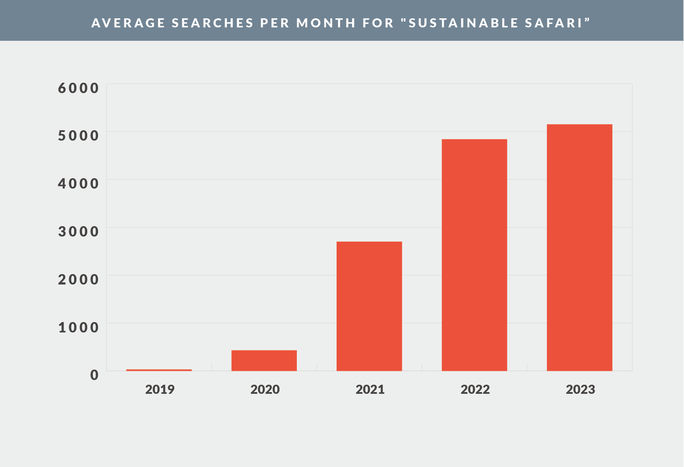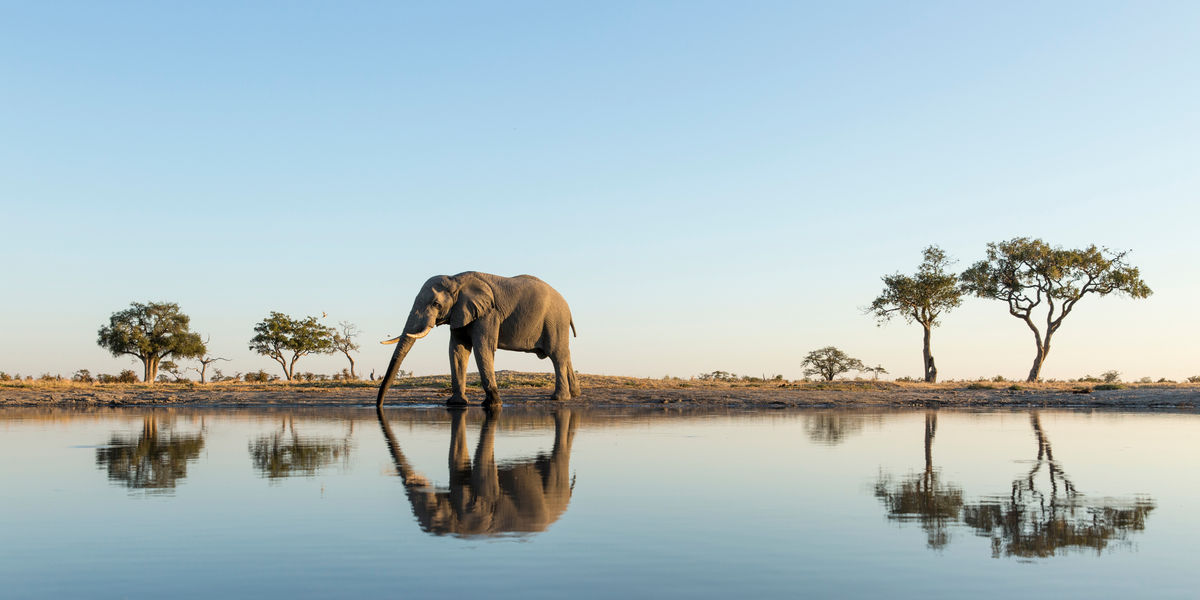Global interest in safaris more than doubled over the course of 2023 with the bulk of travelers especially interested in exploring South Africa, Kenya, and Tanzania.
At the same time, the average amount of money consumers are willing to spend for safari travel has increased by a significant 25 percent.
Those are just a few of the top takeaways from Go2Africa’s annual State of Safaris report. Developed based on Go2Africa’s own proprietary search and booking data, as well as global Google search volumes, the report identifies a number of pivotal trends that are poised to shape the safari industry across Africa.
In addition to the growth in safari travel in general, the report reveals:
- Interest in sustainable safari travel continues to grow, experiencing a more than 1,000 percent increase over the last four years.
- Travelers are increasingly interested in beach/safari combos and intergenerational travel
- The average safari budget now ranges between $5,500 to $6,500
- About 12 percent of solo travelers would consider going on a safari, with couples being the biggest demographic at 47 percent.
Here’s a closer look at some of the most significant developments.
Interest in African Safaris Has More Than Doubled
As the world emerged from the pandemic and travel restrictions eased, interest in safari travel grew exponentially.
With 2023 being the first year that there were very few travel restrictions remaining at all, Google searches for African safaris more than doubled during Q1 increasing by 111 percent over the same time period one year earlier.

Visitors from Australia, the US, and Canada are spending increased amounts on safari travel in 2024. (Photo Credit: Courtesy Go2Africa)
The Average Safari Budget Increased by 25%
About 70 percent of visitors from Australia, the US, and Canada now have what Go2Africa calls “medium to high budgets” for safaris. That’s a significant rise from 43 percent of travelers who had such substantial sums of money set aside for a safari vacation the previous year.
About 25 percent of travelers from South Africa, Europe, and the UK meanwhile, set aside a medium to high budget for a safari vacation, compared to just 18 percent in 2022.
Ranked by spending on safaris, travelers from Italy are at the top of the heap, splashing the most cash on such vacations. Rounding out the top five in order of spending is Belgium, Mexico, the United States, and Philippines.
12 percent of Solo Travelers Would Consider Going on a Safari
The demographics of safari travelers apparently don’t change much from one year to the next, according to Go2Africa. In 2023, the vast majority of people taking safaris were individuals traveling with their partner, a group that made up 47 percent of arrivals to the continent. That figure is notable however, because it’s a decline from 2022, when couples made up 60 percent of all travelers to Africa.
Families, meanwhile, account for the second largest group of safari travelers at 32.3 percent of arrivals in Africa, followed by solo travelers at 12 percent and groups of friends at 11 percent. (Side note: groups of friends visiting Africa tend to choose Congo for their adventure, says Go2Africa).
The central African nation also attracts the highest percentage of solo travelers among African countries, making it an enticing destination for those looking for solo travel-friendly explorations.

Interest in sustainable travel is skyrocketing among consumers. (Photo Credit: Courtesy Go2Africa)
Sustainability Continues to Be a Customer Priority
The Go2Africa also reveals that travelers want a “more authentic and sustainable experiences on their trip.”
“Sustainability is the word on everyone’s lips, but research suggests that it’s more than just a fad,” says the report.
Interest in sustainable safaris has been steadily growing over the years increasing by 6.4 percent from 2022 to 2023.
However, when looking at the wider picture, sustainable safaris have seen more than a 1,000% increase in interest over the last four years.
“Right now, we have a few travelers who have specifically asked if they can volunteer for a day on their safari, so we’re definitely seeing an increase in our guests’ interest in sustainability and connection with the local communities,” Liesel Van Zyl, head of positive impact at Go2Africa, said in a statement. “Our clients look for experiences that foster authentic community engagement during their trip to Africa.”
Beach Safaris
And one last notable trend: safaris combined with beach getaways are now a popular request. This typically includes travelers spending half of the week taking in the animals throughout Africa and half the week relaxing and swimming at a coastal destination.
This emerging demand has resulted in some new countries becoming hotspots that were not always popular including Malawi and Seychelles, says the report.
Interest in travel to Zambia and Malawi increased by 78 percent and 41 percent respectively between 2022 and 2023. Meanwhile, Seychelles experienced a notable increase in visitors, credited to a 20 percent rise in bush and beach combinations compared to the previous year.
“Zambia and Malawi combination safaris are very popular at the moment,” Van Zyl said in a statement. “Zambia offers some great value with more untouched, uncrowded parks to explore compared to some of the more hectic areas in Southern Africa. It’s also a quick one-hour hop and a skip to Malawi for incredible beach and freshwater snorkeling, kayaking and African sundowners.”
For the latest travel news, updates and deals, subscribe to the daily TravelPulse newsletter.











